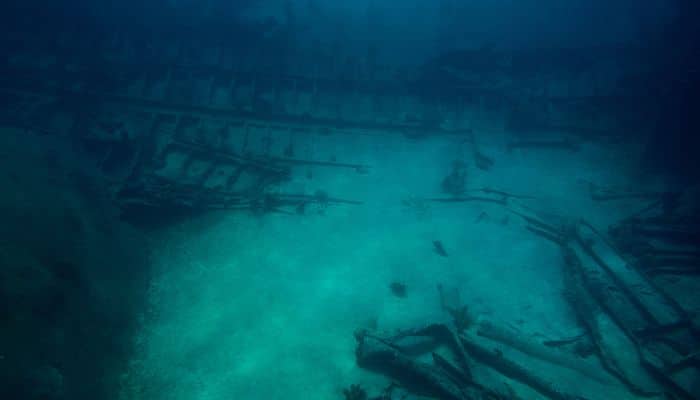
Shots Fired At Bahamas-Flagged Oil Tanker In The Gulf, Crew Members Unharmed
July 6, 2023
Wrecked Bulker OS 35 Successfully Raised From Waters Near Gibraltar
July 6, 2023
Archaeologists have recently showcased the remarkable artifacts from a 17th-century Hanseatic trading shipwreck, discovered approximately 18 months ago off the northern coast of Germany. This achievement marks the first successful recovery of a trading vessel from that era in the region, providing significant insights into maritime history.
The recovered treasures have undergone meticulous cleaning and documentation following an extensive salvage operation. Among the artifacts are porcelain items, fragments of the ship’s rigging, and a remarkably well-preserved stern. These findings offer valuable glimpses into the daily lives of sailors and merchants during the Hanseatic era.
A notable discovery is a liquor bottle with the inscription “Londn,” indicating the global connections maintained by Hanseatic traders. Additionally, animal bones and residue on porcelain fragments provide insights into onboard diet and practices, giving a taste of the culinary experiences during that time.

To ensure long-term preservation, the artifacts will undergo 3D scanning and be stored in water tanks in a Lübeck-based storage facility. Preservation expert Felix Rösch emphasizes the need for a moist environment, as rapid drying would lead to decay.
Following investigations, there are plans to re-submerge the artifacts to preserve them for future generations. Lübeck’s culture senator, Monika Frank, emphasizes the importance of protecting these historical remnants for the benefit of maritime enthusiasts and scholars.
The shipwreck was discovered by chance during a routine water measurement in the Trave River near Lübeck. Resting at a depth of 11 meters (36 feet), the ship measures 25 meters long and approximately 6 meters wide, providing insights into the size and structure of trading vessels of that era.
Experts believe the ship was en route to Scandinavia but never reached its destination. Black scorch marks on the wood suggest a devastating fire, which may have caused the shipwreck. This raises questions about the role of fire on ships during the Hanseatic period and the risks faced by sailors.
The cargo on board potentially played a role in the fire. The ship carried 150 barrels of highly flammable quicklime, a prevalent building material. This highlights the hazards of maritime trade and the challenges faced by merchants seeking economic prosperity.
The Hanseatic League, a medieval confederation of cities and merchants, played a crucial role in shaping trade and defense in the North and Baltic Seas region. Stretching from the Netherlands to Poland and along the Scandinavian coastline, the league had a significant impact on commerce and regional dynamics.
The exhibition of these 400-year-old treasures offers a unique opportunity to explore the lives of those who sailed the seas during the Hanseatic era. It contributes to our understanding of historical maritime trade routes and the interconnectedness of nations and cultures through seafaring endeavors.
The unveiling of these artifacts celebrates the dedication and expertise of archaeologists, preservationists, and researchers involved in the project. Their meticulous work ensures the enduring legacy of this Hanseatic trading ship, preserving its historical significance for future generations.
This remarkable discovery deepens our understanding of the Hanseatic period and its influence on northern European maritime history. The artifacts serve as tangible links to the past, enabling us to connect with the stories of sailors, merchants, and their journeys across the seas centuries ago.
Reference: National Herald, Wire, Tiwannews
Ancient Treasures From German Shipwreck Unveiled After 400 Years appeared first on Marine Insight – The Maritime Industry Guide
Source: Maritime Shipping News


